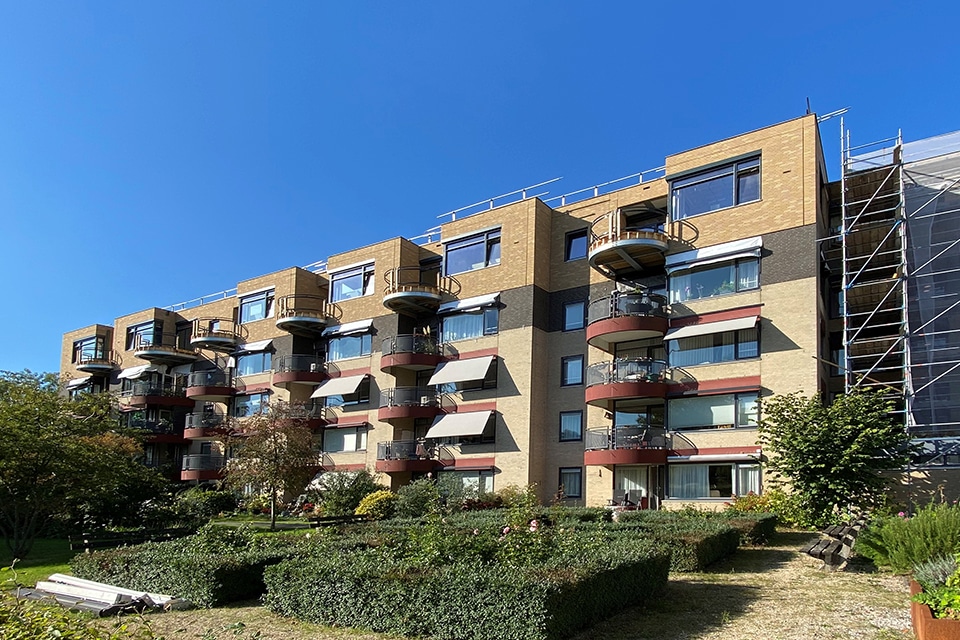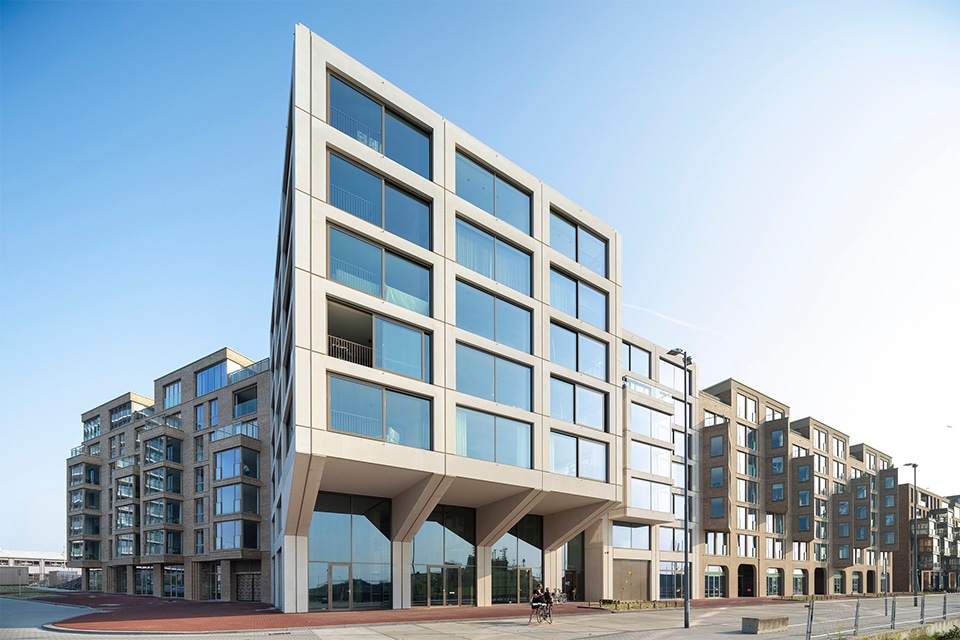
Theemswegtracé, Rotterdam | Just moving a piece of harbor railroad line
Thames Road route solves Caland Bridge bottleneck
Contractor consortium SaVe is rapidly building the substructure of what is to become the Thames Road route by the end of 2021: a smart detour that the Port Authority intends to use to prevent future congestion on rail and water. A work of art of stature.
In the port of Rotterdam, all forms of transport come together in high intensity. If this threatens to create bottlenecks, it is important to anticipate them quickly and adequately. The Caland Bridge at Rozenburg is such a bottleneck. This steel lift bridge built in 1969 is a link in the Betuweroute, the railroad connection between the western port area and the hinterland, and provides access to the Brittain harbor for maritime shipping. Compared to 2010, it is expected to double the number of daily bridge openings and at least double the number of trains per day by 2030. To prevent this infarction, a clever detour has been devised that prevents rail traffic from crossing the shipping route: the Thames Road route.

Bridge over the Rozenburg Lock.
Connecting Together
The detour consists entirely of a viaduct that begins just before the Caland Bridge, where the new railroad line crosses the tunnel basin of the Thomassentunnel on the right with an arched bridge. On Neckarweg, the viaduct crosses the strip of windbreaks to then continue its path over three kilometers on Thamesweg via a second arch bridge over the Rozenburg Lock. At the Merseyweg the connection to the existing track along the A15 will be made. The substructure of the Thamesweg route is being built by contractor consortium SaVe - Samen Verbinden - in which BESIX, Dura Vermeer, Mobilis, Hollandia and Iemants are working together (Iemants is the contracting party for Smulders). The pace is brisk: in November 2017, SaVe won the tender (out of five bidders), in September 2018 the actual construction began and at the end of 2020 the combination hands over to the makers of the rail system. By the end of 2021, the first trains can start running.

Aerial view of part of the project area. (Photo: PortPictures/Danny Cornelissen)
4D
"That's definitely a fast pace," agrees Dieter Behaeghel, SaVe's project manager. "And even though it's an extensive job with technical challenges, surrounding companies that want to keep working 24/7, different types of infrastructure you have to deal with, and an array of pipes and cables underground, we're right on schedule. Connecting together involves working well together and paying attention to the relationship. Not only with the partners but also with the Port of Rotterdam Authority, all stakeholders and the project environment. Our goal is always to start work safely and well prepared. For example, the project is worked out entirely in BIM, but in 4D, in which we combine 3D with planning. This allows you to identify bottlenecks in advance with, for example, crane arrangements, transport of large elements and building pits."

Dieter Behaeghel: "A good relationship with all stakeholders is essential."
Subprojects
The Thames Road route is four kilometers long in total and is divided into subprojects with their own implementers. Behaeghel: "The viaduct along the Thamesweg, for example, is one construction flow. Foundations are made there one after the other, foundations are poured, foundations and columns are poured, precast underlay beams are laid and thirty meter long beams are placed. And that about seventy times. The steel bridges are also separate projects carried out in parallel."

Bridge-in-construction over the Thomas Tunnel.
Hollandia and Iemants are the bridge builders, having sailed in their bridge sections last summer and engaged in assembly at the pre-construction sites. The bridges appear identical, but the one over the Thomas Tunnel is a good 270 meters long with its approach sections, the bridge over the lock is over 170 meters long but is heavier and wider because the track curves there. In steel alone, they weigh 4,200 and 4,300 tons. When they are in place, another heavily reinforced concrete deck will come on top and then the weight almost doubles.

Along the Thames Road, poured columns are ready for placing underlay beams
Four kilometers of work site
Beyond these eye-catching subprojects, there are numerous smaller works that have played out or are pending. For example, the Port Authority has previously moved the trunk track and bike path on Thames Road and raised a pipeline bridge from seven to 17 meters. SaVe itself has moved the Thames Road northward in phases to make room for the new railroad viaduct. In 2018, three large shells of the distinctive windbreak on Neckar Road were demolished so that the railroad viaduct could pass through it. On the other side of the road, the Port Authority built a row of narrower new scales in advance. At Neckarhaven, the viaduct runs partly over Vopak's premises, so they will have to close down for a weekend in due course. Behaeghel: "That shows again how important that contact with the stakeholders is. Your working area is four kilometers long, partly built-up and partly in use. You can only succeed if you solve that well in advance.




